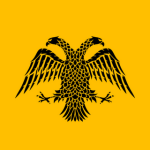Categoría: History
Created by: KSGRAM
Número de Blosarios: 9
- There are no other language terms for this blossary.
- Traducir términos
Constantine VII Porphyrogennetos or Porphyrogenitus, "the Purple-born" (that is, born in the imperial bed chambers) (born at September 2, 905 – died at November 9, 959), was the fourth ...
Theodosius I also known as Theodosius the Great, was Roman Emperor from 379 to 395. Theodosius was the last emperor to rule over both the eastern and the western halves of the Roman Empire. His ...
Diocletian was Roman emperor from 284 to 305. Born to a family of low status in the Roman province of Dalmatia, Diocletian rose through the ranks of the military to become cavalry commander to the ...
Julian ( also known as Julian the Apostate, as well as Julian the Philosopher, was Roman Emperor from 361 to 363 and a noted philosopher and Greek writer. A member of the Constantinian dynasty, ...
Constantinople by this stage was underpopulated and dilapidated. The population of the city had collapsed so severely that it was now little more than a cluster of villages separated by fields. On 2 ...
In 1054, relations between the Eastern and Western traditions within the Christian Church reached a terminal crisis, known as the East–West Schism. Although there was a formal declaration of ...
Constantine the Great (born at 27 February c. 272 – died at 22 May 337), also known as Constantine I or Saint Constantine, was Roman Emperor from 306 to 337. Constantine was the son of Flavius ...


 English (EN)
English (EN)




